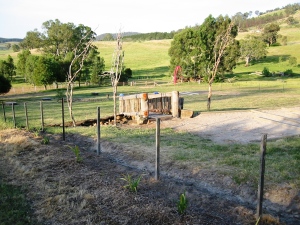By Judy Oldmeadow, Owner & Master Horsewoman, Samaria Creek Morgan Horses
As promised, here’s my take on Andrew Bowe’s www.barehoofcare.com site.
Brumbies and American Mustangs have amazing feet. They don’t get trimmed, but they do travel many kilometres each day over varied terrain to graze and find water.
So why question thousands of years of evolution?
Historically, horseshoes let soft-footed domestic horses be used in any terrain. They helped mankind conquer the world in war, agriculture and transport.
Yet shoes come with a host of problems. If you’re not out conquering the world, these problems come to the fore.
Shoes protect the soft inner structures of a horse’s feet. But in so doing, they impede all other foot functions.
Absorption
The equine foot is a complex, three-dimensional shock absorber.
It’s designed to absorb nearly all the concussion from ground impact before it reaches the lower leg joints (which can only handle a very small amount).
Shoes blow this function out of the water. Not only is the frog unable to act as the initial and primary weight-bearing structure, the impact of the rigid shoe goes straight through the hoof wall into bones and joints.
Circulation
Proper function lets blood and lymph freely access every living cell in the foot, providing nourishment and removing waste. This is called perfusion.
Shoes seem to significantly compromise circulation. This is most evident on cold mornings, when healthy bare feet are warm to the touch, but shod feet are cold. There’s even a temperature difference between shod feet and bare feet on the same horse.
Shod feet grow much slower than bare feet because healthy tissue can’t thrive with poor circulation.
Weight Bearing
The equine foot is designed to share the weight bearing responsibilities across most of the ground surface (the inner wall, some sole and most of the frog). Notable exceptions are the outer wall and quarters, which aren’t designed for weight bearing.
The foot even adapts over time to the ground it’s living on to optimise this sharing of the load.
A shod foot, however, carries the weight of the horse entirely on the wall (including the outer wall and quarter, which should NOT be weight bearing).
This change in weight bearing may squeeze the coronary artery, causing blood to be shunted to the vein above the hoof. It may also cause a failure of the valve system that would otherwise lock the required blood into the foot at each stride for cushioning and perfusion.
If a horse can’t stand comfortably with vertical cannon bones, it must brace its neck and shoulders to engage its stay apparatus.
This causes fatigue and these poor animals can’t even get a good night’s sleep! Over time, this bracing manifests in the overdevelopment of certain muscle groups.
Deterioration
Horse feet deteriorate with domestication. The situation doesn’t improve with each successive shoeing. Rather, the more times feet are shod, the more they rely on shoes.
Chronic lameness is a degeneration that develops in a dysfunctional body over a long period of time and manifests into such problems as: laminitis, navicular, ringbone, side bone, degenerative joints – all of which are huge problems in the equine industry.
Horses are much better not shod in the first place.
Why Barefoot?
With barefooting, we maintain a horse’s feet in a physiologically correct framework, so they can move correctly, rest comfortably and remain functional at all times.
Rather than prop up dodgy foundations with shoes, barefooting develops strong, healthy foundations beneath a horse.
This leads to better long-term soundness.
Tags: barefooter, barefooting, brumby, farrier, feet, foot, foot care, frog, hoof, hooves, horse, morgan, mustang



Leave a comment